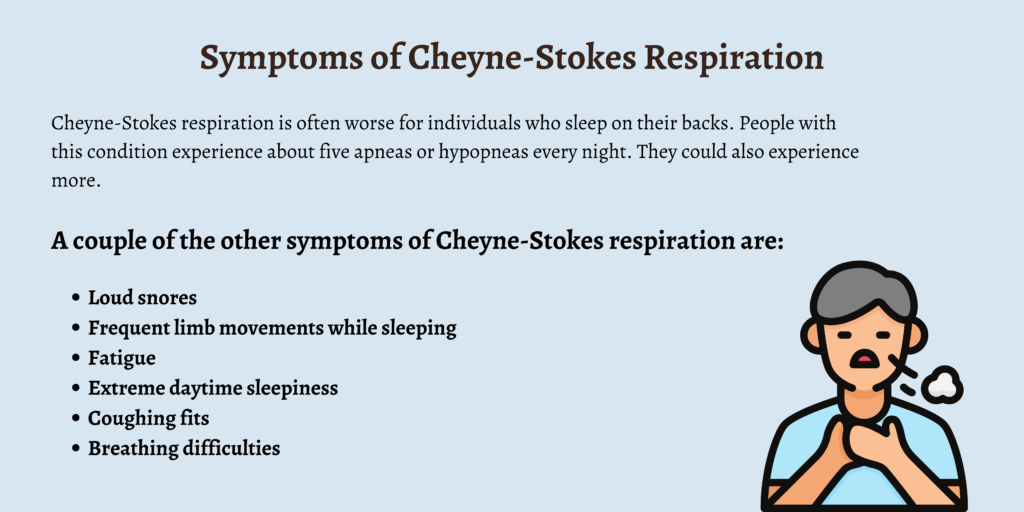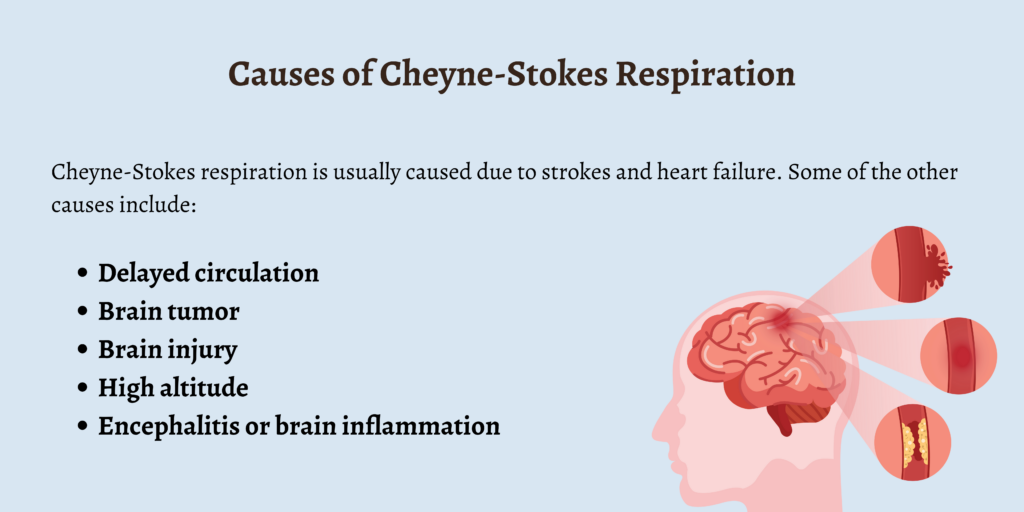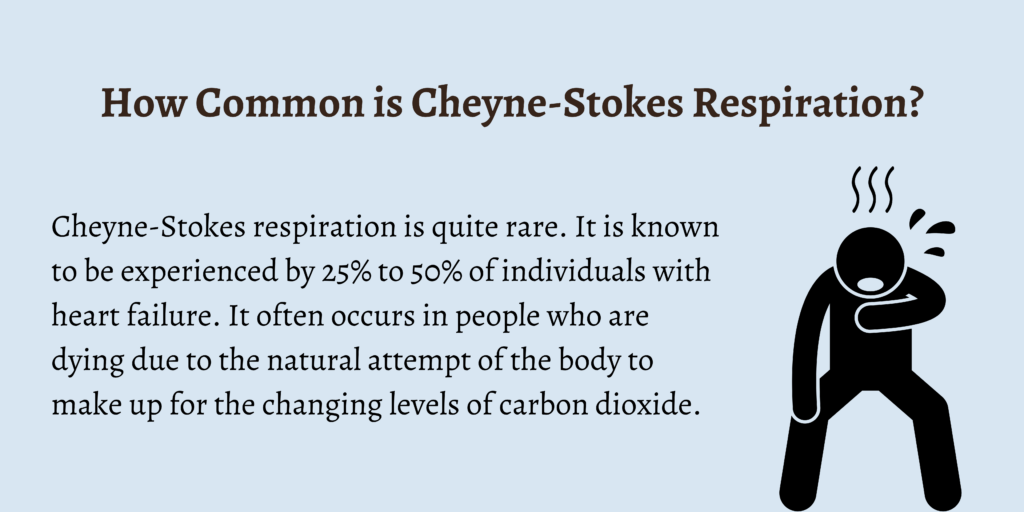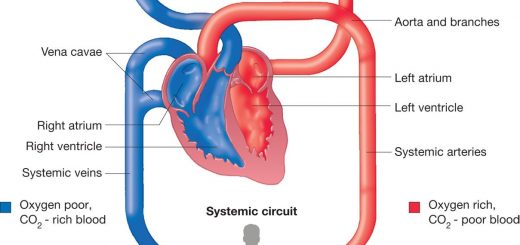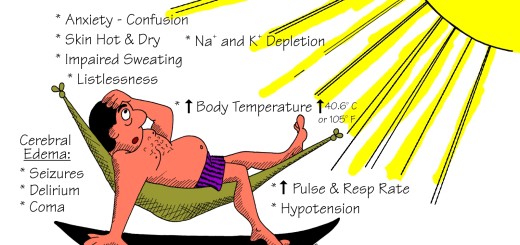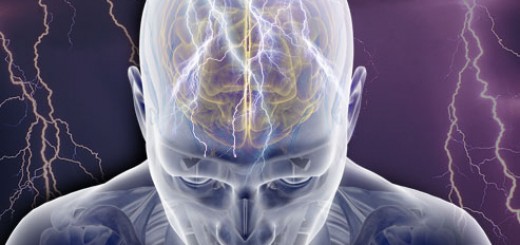What is Cheyne-Stokes Respiration?
Cheyne-Stokes respiration or Cheyne-Stokes breathing is an abnormal type of breathing. It is characterized by irregular breathing patterns that start off with long and difficult breaths followed by rapid and shallow breaths and moments with no breaths at all.
This breathing pattern is often followed by a period of sleep apnea where a person stops breathing temporarily, after which the cycle repeats itself. Also known as agonal respiration, Cheyne-Stokes respiration could be a sign of heart failure, stroke, or an issue in the brain or lungs.
Symptoms of Cheyne-Stokes Respiration
Cheyne-Stokes respiration is often worse for individuals who sleep on their backs. People with this condition experience about five apneas or hypopneas every night. They could also experience more.
A couple of the other symptoms of Cheyne-Stokes respiration are:
- Loud snores
- Frequent limb movements while sleeping
- Fatigue
- Extreme daytime sleepiness
- Coughing fits
- Breathing difficulties
Causes of Cheyne-Stokes Respiration
Cheyne-Stokes respiration is usually caused due to strokes and heart failure. Some of the other causes include:
- Delayed circulation
- Brain tumor
- Brain injury
- High altitude
- Encephalitis or brain inflammation
Other Atypical Patterns of Respiration
The other conditions that include atypical patterns of respiration are listed below:
- Kussmaul breathing: Kussmaul breathing is a breathing pattern characterized by rapid and deep breaths at a consistent pace. It usually is a sign that there is too much acid in the person’s bloodstream, and this mostly occurs due to a life-threatening complication of diabetes known as diabetic ketoacidosis.
- Hyperventilation: Hyperventilation is when an individual breathes too quickly and deeply, leading to low carbon dioxide and elevated oxygen levels in the blood. It’s often caused due to panic attacks, stress, and anxiety.
- Hypoventilation: Hypoventilation refers to a person’s breathing being too shallow or too slow, thereby leading to low oxygen levels and high carbon dioxide levels in their blood. It is usually the result of lung issues such as bronchitis and cystic fibrosis.
- Obstructive sleep apnea: When a person experiences obstructive sleep apnea, there are brief periods where they stop breathing due to the collapse of their upper airway. This can take place numerous times in an hour.
Associated Conditions
Many conditions cause Cheyne-Stokes respiration, and some of them are as follows:
- Congestive heart failure: A long-term condition where the heart can’t pump enough blood to meet the needs of the body.
- Cardiogenic pulmonary edema: A life-threatening condition where excess fluid gets accumulated in the lungs due to increased pressure in the heart.
- Hyponatremia: A condition where the sodium levels in the blood fall too low.
- Elevated intracranial pressure: A condition in which the pressure inside the skull increases due to causes such as head injuries and brain tumors.
- Carbon monoxide poisoning: Carbon monoxide poisoning occurs when a person breathes in high levels of carbon monoxide, leading to asphyxia, where the body doesn’t get the required amount of oxygen.
How Common is Cheyne-Stokes Respiration?
Cheyne-Stokes respiration is quite rare. It is known to be experienced by 25% to 50% of individuals with heart failure. It often occurs in people who are dying due to the natural attempt of the body to make up for the changing levels of carbon dioxide.
Cheyne-Stokes Respiration and Death
Cheyne-Stokes respiration mainly occurs in a person who is dying, taking place days or hours before the individual passes away.
As a person gets closer to death, they lose the ability to swallow, which causes their breathing pattern to get louder. Due to this, they make gurgling noises which are known as the death rattle.
Before a person dies, they can also display physical symptoms such as deep sighing or twitching muscles due to the chemical imbalances in the person’s body.
Although the condition could be traumatizing to watch for the people around the dying individual, it isn’t uncomfortable to go through for the person themselves. It is just a reaction of the body adjusting to the physiological changes as the various organs begin to fail.
If a person experiences Cheyne-Stokes respiration, it usually signals that they will die in a couple of minutes or hours. However, this abnormal breathing can also last for numerous days.
How is Cheyne-Stokes Respiration Diagnosed?
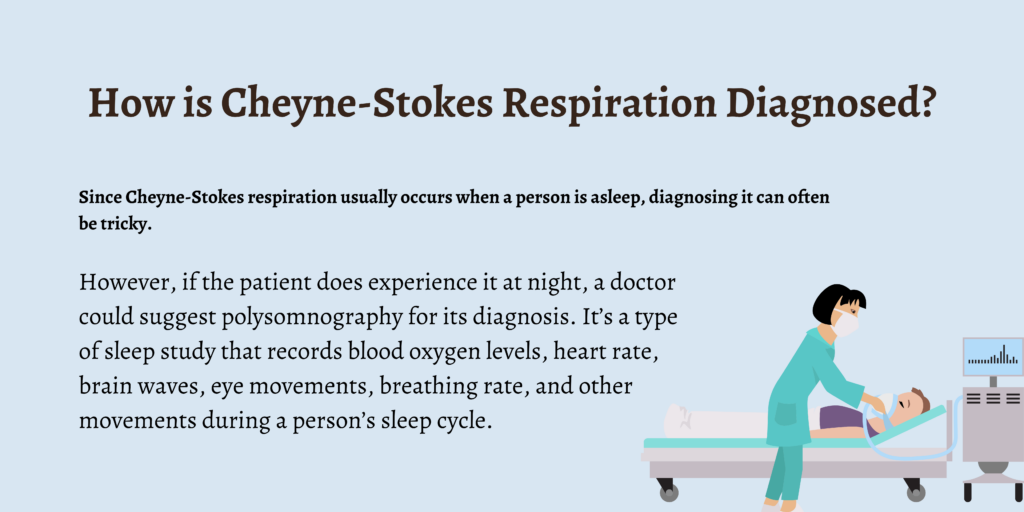
Since Cheyne-Stokes respiration usually occurs when a person is asleep, diagnosing it can often be tricky.
However, if the patient does experience it at night, a doctor could suggest polysomnography for its diagnosis. It’s a type of sleep study that records blood oxygen levels, heart rate, brain waves, eye movements, breathing rate, and other movements during a person’s sleep cycle.
How to Treat Cheyne-Stokes Respiration
The treatment for Cheyne-Stokes respiration depends on the underlying cause. It can be resolved if the condition is caused due to high altitude or carbon dioxide poisoning. The common treatment options include:
- Oxygen therapy
- Continuous positive airway pressure to treat sleep apnea
- Medicines for heart failure
If a person has severe heart failure, they might have to go through the following surgeries or procedures:
- Heart valve repair or replacement
- Cardiac resynchronization therapy
- Coronary bypass surgery
- Get an implantable cardioverter-defibrillator
How to Prevent Cheyne-Stokes Respiration
In order to prevent Cheyne-Stokes respiration, one would have to take steps to stop the conditions associated with this abnormal type of breathing, such as a stroke and heart failure. If you suffer from any of these issues, it’s imperative to strictly stick to the treatment plan so that the symptoms stay under control.
Another thing to remember is to avoid exposing yourself to toxins and heavy metals that can lead to toxic encephalopathy, which is a brain dysfunction caused due to exposure to toxic substances.
FAQs
1. What is Cheyne-Stokes respiration?
Cheyne-Stokes respiration is a kind of abnormal breathing that involves deep breathing followed by shallow breathing.
2. What are the symptoms of Cheyne-Stokes respiration?
Some of the symptoms of Cheyne-Stokes respiration are loud snores, breathing difficulties, and fatigue.
3. What are the causes of Cheyne-Stokes respiration?
A few of the causes of Cheyne-Stokes respiration include heart failure, brain injury, and brain trauma.
4. How can Cheyne-Stokes respiration be diagnosed?
Cheyne-Stokes respiration can be diagnosed through a sleep study known as polysomnography.
5. Does Cheyne-Stokes respiration mostly occur at night?
Yes, Cheyne-Stokes respiration mostly occurs at night when a person is asleep.
Conclusion
Cheyne-Stokes respiration is a condition in which a person displays an atypical breathing pattern where deep breaths are followed by shallow breaths. It usually occurs as a result of an underlying health condition.If you have congestive heart failure, for instance, you could experience Cheyne-Stokes respiration. Therefore, getting the underlying condition treated is of utmost importance. Consult your doctor immediately if you display symptoms related to Cheyne-Stokes respiration or any other kind of abnormal breathing.

